How to properly address an envelope
We might be living in an age of text messages and emails, but there’s still no substitute for sending snail mail.
For example, while an evite to a party or event might be convenient, it wouldn’t be the same to request someone's presence at a wedding through an electronic message.
Same goes for a thank-you note or sympathy card.
So, even though it may seem old-school, knowing how to address an envelope properly is a skill everyone should have, especially if you’re sending a formal invitation or professional letter.
Even if you’re addressing an envelope to family member, friend or neighbor, getting it right matters.
“Addressing an envelope takes some thought to do it properly,” Diane Gottsman, a national etiquette expert at the Protocol School of Texas, tells TODAY.com.
“I always use the name of the person, including an honorific when appropriate,” Gottsman says. “Do not abbreviate the city and state for a formal envelope and make sure and include a return address.”
And if you’re sending out formal invitations, holiday or Christmas cards, Gottsman says to avoid using labels.
Want more pointers? Keep scrolling for a helpful guide on proper mailing etiquette.
How to address an envelope
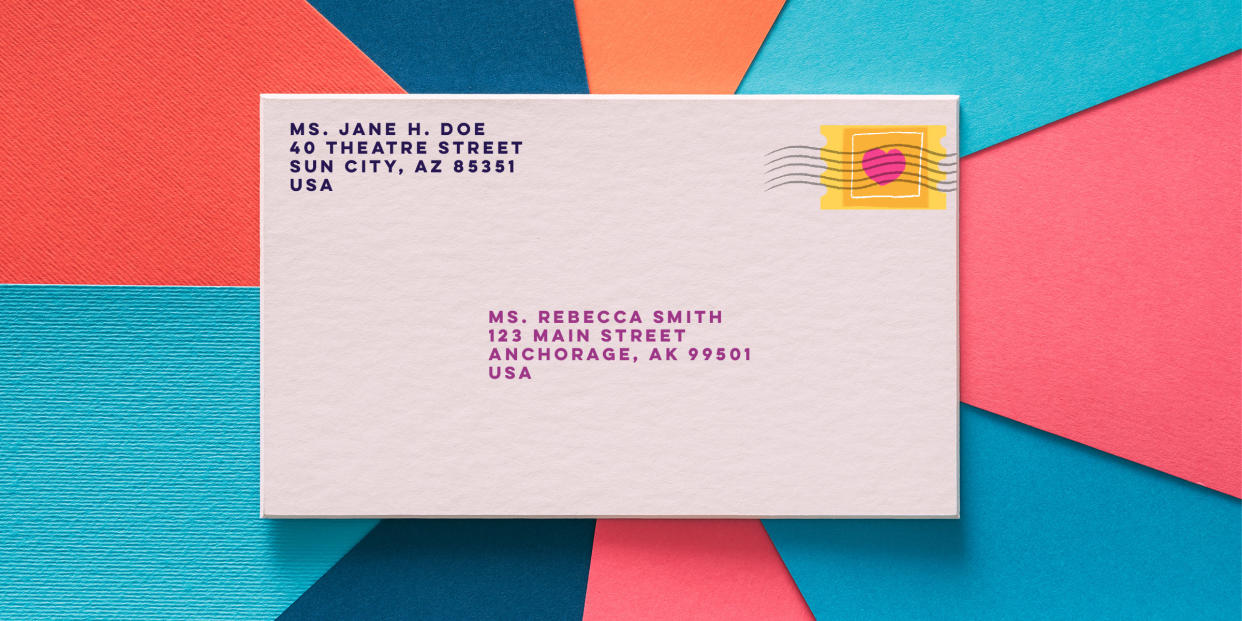
Write the return address in the top left corner.
Write the recipient's address slightly centered on the bottom half of the envelope.
Place the stamp in the top right corner.
There are two addresses that are typically seen on the envelope, but only one is technically required: the recipient's. The sender's address isn't necessary, but it is recommended. If there are any mistakes that prevent the delivery of the letter, the lack of a return address means the post office will be unable to send it back in order to fix any problems.
How to write the sender's (return) address
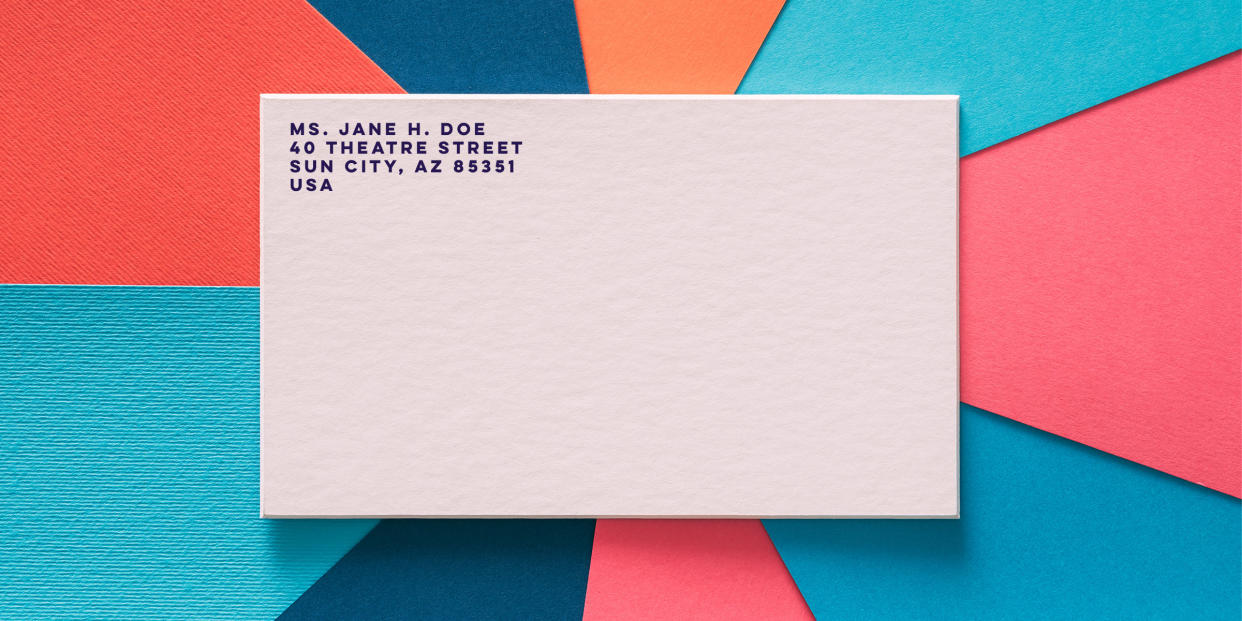
Start with your full name.
Write your street address on the next line. Use two lines, if needed.
Follow that line with the city, state and ZIP code of your address.
How to write the recipient's address
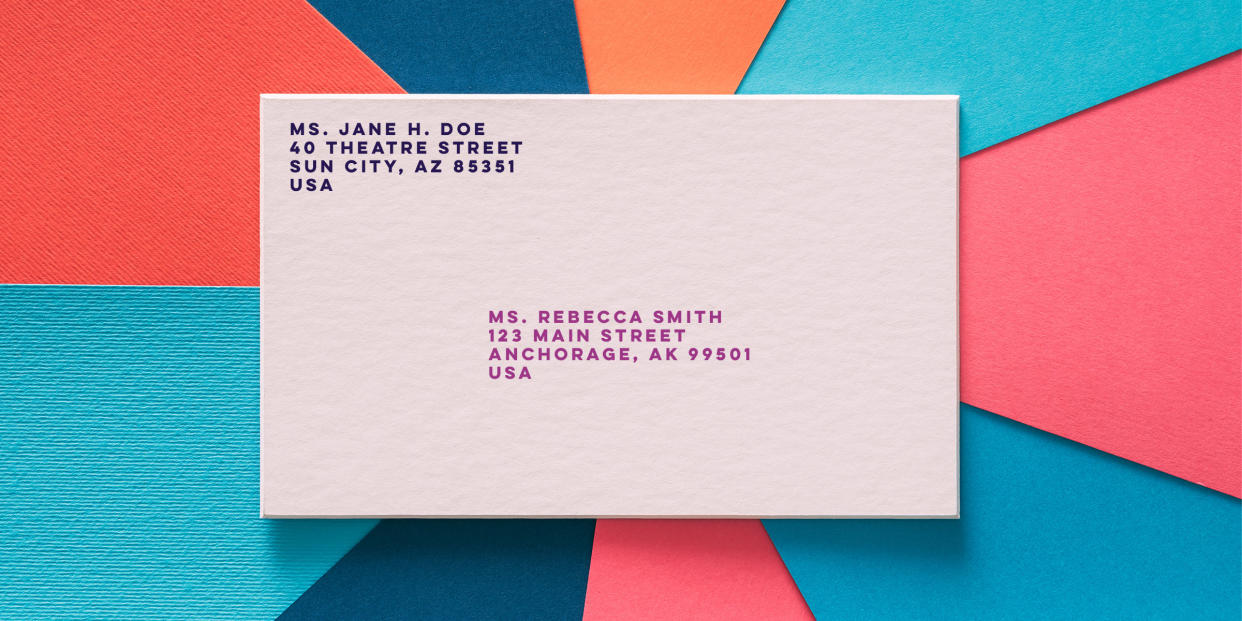
For informal letters, follow the same format as the sender's address.
If sending a letter to someone at a specific business, the first line should be the company's name.
In the next line, follow "ATTN:" or "c/o" with the individual's name. If the letter is not to someone at a specific business, the first line should simply be their name.
The next lines two should be the street address, city, state and ZIP code.
How to format military addresses (APO, FPO, DPO)
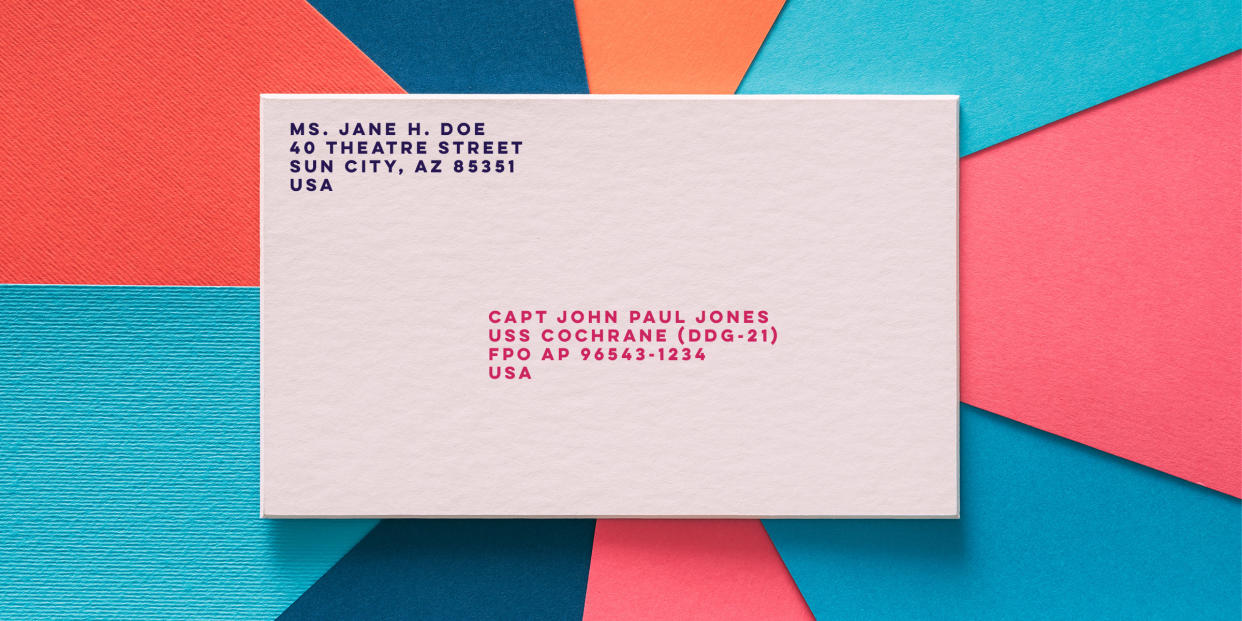
Even though they follow the same format as regular addresses, military addresses don't use the city and state names that many are used to.
The city name will be either APO (Air/Army Post Office), FPO (Fleet Post Office) or DPO (Diplomatic Post Office).
For the state, AA (Armed Forces America), AE (Armed Forces Europe) and AP (Armed Forces Pacific) are used, depending on the duty station.
The ZIP code is the same, but sometimes the extra four number code is required for delivery.
How to write an international shipping address
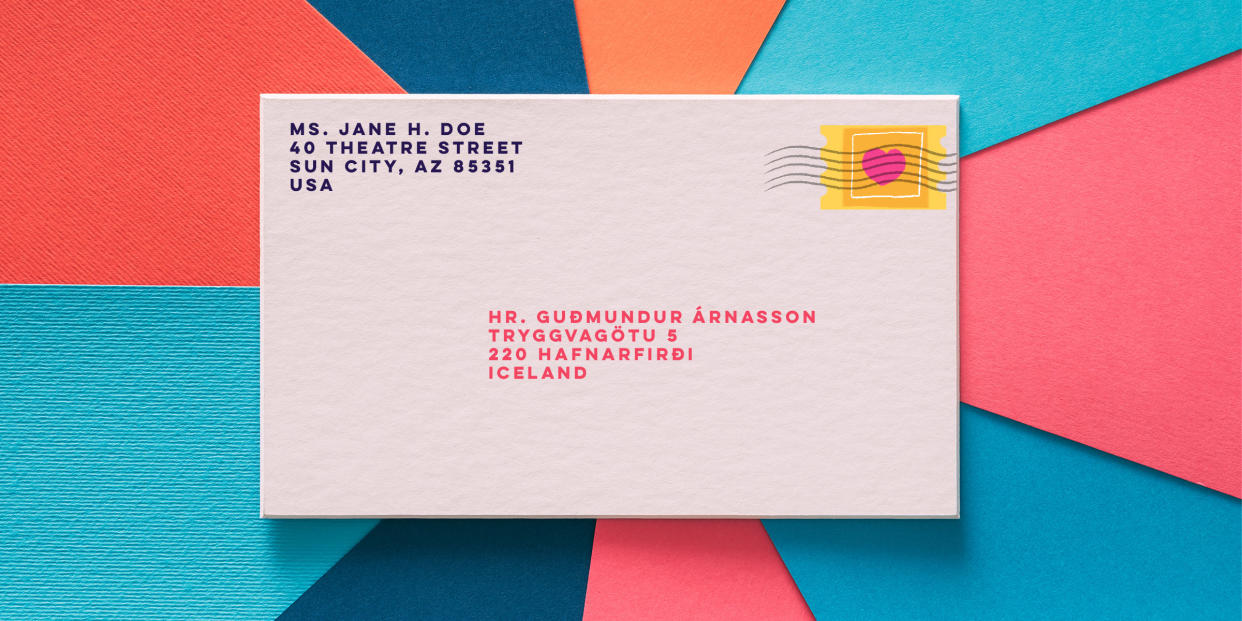
If sending a letter to an overseas address that isn't military, the address format typically stays the same — just with the addition of the country name as the last line.
Some countries place the ZIP code in front of the city and country but it varies from country to country, so just check to be sure.
How to find the "ZIP+4" code
If you're unsure of the extra four-number code, USPS has a ZIP code lookup tool on their website.
Choose to look up the ZIP code by address and enter all the required information.
Press "Find" and USPS will give you the ZIP+4 code.
How many stamps should you use
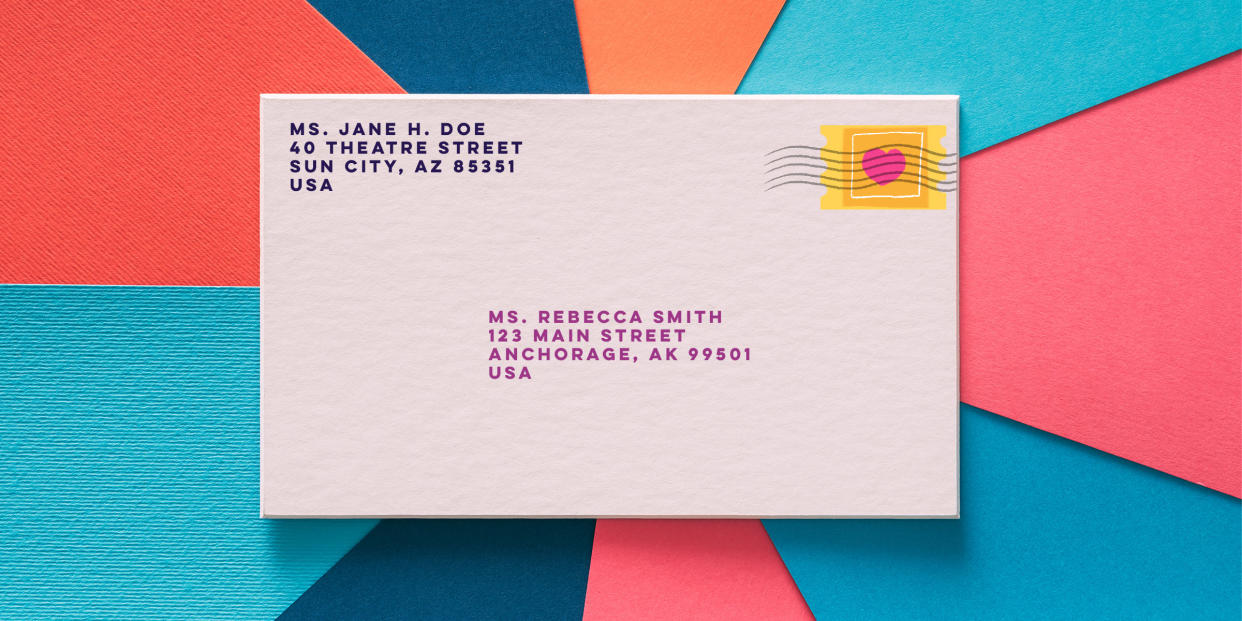
Placing the stamp is easy, but knowing which stamps and how many to use is the hard part.
For a standard 1-ounce letter being shipped anywhere in America, Forever stamps are recommended because you'll always be able to use them regardless of future stamp price changes.
Every ounce over one costs 15 cents, so you'll have to use Additional Ounce stamps for every extra ounce. Two-ounce stamps are also an option.
If you're sending a postcard, don't cheat yourself with the Forever stamps. Postcards have their own stamps that are normally cheaper.
For international addresses, Global Forever stamps are used and just like the Forever stamps, you can use them whenever, regardless of price adjustments.
Irregular-shaped envelopes that may be used for square wedding invitations or graduation announcements require different stamps called non-machinable stamps. Because the square envelope can't fit the machine for automatic processing, the stamp costs a little extra to account for the non-machinable surcharge.
With the appropriate stamp, accurate addresses for both the sender and the recipient, and the right placement of all three on the envelope, your letter is ready to be sent!
This article was originally published on TODAY.com
